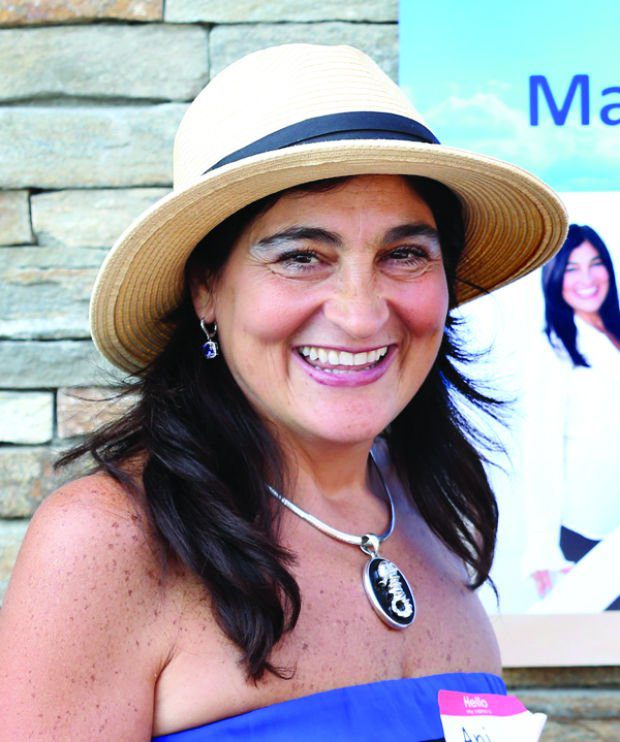
As 2013 winds down and Malibu prepares to usher in 2014, many locals who grew up in places other than Malibu reflected on longstanding cultural New Year’s Eve traditions. People from Argentina, Mexico, Kentucky, Armenia and England shared their favorites with The Malibu Times.
The Argentinean New Year
One of those locals is the charismatic Cantor Marcelo Gindlin of the Malibu Jewish Center and Synagogue, who moved to Malibu 13 years ago. Originally from Buenos Aires, Argentina, Gindlin said New Year’s Eve in Buenos Aires centers on unity: families, friends and acquaintances gather under the same roof to hope the new year will bring good graces.
“Many dreams and wishes are in our hearts since we live in a country that is very rocky economically,” wrote Gindlin, who is currently traveling in Israel. “And…family is very, very important.”
Though friends and family come first, the food sounds equally essential.
Gindlin described asado as the main course, an Argentinean charcoal-style of barbecue unofficially known as the national dish. Marinated in an herb dressing made of parsley, garlic, oregano and olive oil known as “chimichurri,” the meat is held up in metal crosses and cooked over a charcoal pit. Other dishes include salads, different cuts of meats and desserts made with dulce de leche.
Groups congregate at homes, restaurants and country clubs, and often gather in a hut-style canopy known as a “quincho” for their feast, Gindlin said.
“At midnight, many people do pyrotechnic [fireworks] and we toast with a light alcoholic beverage called ‘sidra,’” Gindlin wrote. “Then after midnight, you leave your family and meet your friends at the discos.”
The Southern New Year
Malibu resident Sky Stipanowich lived in Kentucky for many years before ending up in Malibu. Her family typically had a low-key New Year’s holiday, often sitting on the couch and watching the ball drop on TV in New York.
But one Southern specialty that stood out involved the divisive taste of black-eyed peas.
“There’s a Southern tradition that if you eat black-eyed peas on New Year’s Day, you will have good luck in the new year,” Stipanowich said.
“I don’t know why we always held that tradition, because no one really liked black-eyed peas,” she said.
The Mexican New Year
Oscar Mondragon, who manages the Malibu Community Labor Exchange, recalled plenty of music, food and drinking for the Mexican-style New Year’s Eve.
“Tamales, piñatas, posadas, mariachis are all big things,” Mondragon said.
“Posadas” are a series of Christmas festivals held before the new year. And on the night of the 31st, families stay up drinking tequila, dancing to festive mariachi music and eating bounties of tamales. No one gets much sleep.
“Everyone waits for the hoopla of that night,” he said.
The British-Scottish New Year
Malibu transplant Richard Chesterfield described an endless feast growing up in his native Liverpool, England.
He and his family celebrated a British-Scottish holiday on New Year’s, dubbed the Hogmanay celebration.
Dishes include roast beef, Yorkshire pudding (made from biscuits and beef drippings), horseradish, ‘bubble and squeak’ mix of roasted and mashed vegetables, trifle pudding, apple pie made with Bramley’s seedlings, bird’s vanilla custard and minced pies.
And, they can’t forget the alcohol.
“On New Year’s Eve you’ve got to have champagne,” he said. “And plenty of Guinness.”
The Armenian New Year
For many Armenian families, New Year’s Eve is a 24-hour party, said Ani Dermenjian, a local architectural specialist for Coldwell Banker.
Dermenjian has often been tasked with hosting more than 100 guests at her home to ring in the new year. Beginning around 6 p.m., family, extended family and friends show up to enjoy food and drinks. Men play cards together, children play games and teenagers entertain themselves with karaoke.
“The minute it hits the new year, the first thing that all we did was pray as a family,” she said. “…After the kissing and all the hugging. Then the first piece we would put in our mouths was something sweet. The tradition with that is to make sure your new year is not only sweet, but the sweetness also carries out throughout the year.”
But the celebration is far from over after midnight. Around 5 a.m., many gather in the kitchen to help prepare a traditional soup dish known as khash. The soup is made with cow parts such as tripe (intestine).
“Later, we watch the sun rise as a family,” she said. “And then you’ll just find a lot of drunk people passed out on the living room floor.”

